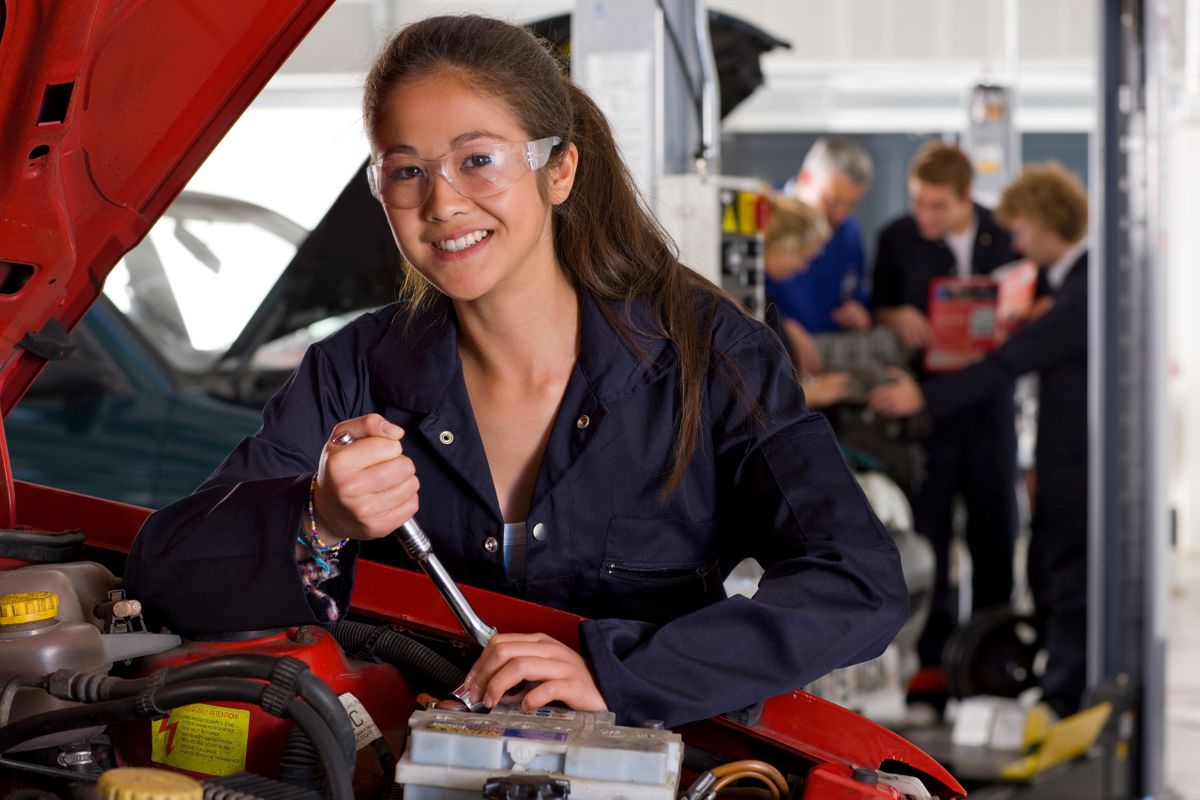In today's rapidly evolving job market, the need for skilled workers in various trades has become increasingly apparent. However, the current educational landscape in the SF/Bay Area lacks the necessary emphasis on skilled trades education. This blog delves into the benefits of a 4-year high school focused on skilled trades and highlights the challenges faced in this field.
The demand for skilled workers continues to rise, and a skilled trades-focused high school can play a crucial role in meeting this demand. By providing specialized training, such schools bridge the gap between high school and workforce readiness, equipping students with real-world skills. Moreover, a focus on skilled trades education promotes inclusivity, ensuring equal opportunities for all students, regardless of their academic strengths or social class. While tech jobs may come and go, skilled trades workers will always be in demand, making this educational approach vital for the future job market.
Unfortunately, traditional high schools tend to overlook vocational training, thereby failing to provide students with the necessary skills for skilled trades careers. Moreover, in the Bay Area, trade-focused programs are limited, making it challenging for students to pursue their interests in this field. Additionally, societal perceptions often relegate skilled trades to the status of inferior alternatives, leading to misconceptions about the potential offered by these careers.
A 4-year high school focused on skilled trades can provide students with an extensive curriculum that intertwines core academic subjects with practical trade courses. This comprehensive approach equips students with the necessary knowledge and skills, empowering them to excel in their chosen trades. Alongside classroom instruction, hands-on learning experiences and apprenticeship opportunities allow students to apply what they have learned in real-world settings. Furthermore, such schools foster entrepreneurial skills and promote career exploration, preparing students for success in an ever-changing job market. Through a supportive environment, personal and professional development are prioritized, nurturing well-rounded individuals.
Collaboration is key to the success of a skilled trades-focused high school. Partnerships with local businesses and trade unions result in comprehensive and relevant training for students. Mentorship programs play a vital role in bridging the gap between education and the industry. By connecting students with experienced professionals, practical knowledge and career guidance are shared. Additionally, a strong network among students, alumni, and industry professionals fosters ongoing support, ensuring continued success throughout their careers.
Implementing a skilled trades-focused high school comes with its fair share of obstacles. Attracting and retaining qualified educators and instructors is crucial to providing quality education. Adequate funding is necessary for the establishment of state-of-the-art infrastructure, procurement of essential equipment, and provision of resources that support hands-on learning. Additionally, potential stigmas associated with vocational education need to be addressed, highlighting the value and potential for success in skilled trades careers.
To ensure equitable access and inclusivity, skilled trades-focused high schools must actively encourage diversity. This can be achieved by creating an inclusive environment that welcomes students from all backgrounds and demographics. Additionally, targeted support for underrepresented communities and marginalized groups paves the way for equal opportunities in skilled trades careers.
Drawing inspiration from successful skill-focused high schools in other regions allows for cross-pollination of ideas and best practices. Furthermore, it sheds light on the positive impact that skilled trades-focused high schools have on local communities, driving economic growth and providing valuable services.
Changing public perceptions and advocating for the benefits of a skilled trades-focused high school are crucial steps towards reshaping the educational landscape. By raising awareness about the value of skilled trades education, we seek to dispel the misconceptions surrounding such careers. Collaboration with policymakers, educational institutions, and community leaders ensures that skilled trades education is given the importance it deserves. Promoting a positive narrative surrounding skilled trades and vocational education inspires a renewed sense of appreciation for these fields.
Students who attend a skilled trades-focused high school can still pursue higher education if they choose to do so, as these schools equip students with a well-rounded skillset. This educational model serves as a complementary alternative to the traditional college-focused education system, providing students with specialized skills, while still valuing comprehensive academic education. Construction jobs, auto body jobs, metal fabrication jobs, electrical jobs and plumbing jobs and machinist jobs will always be in demand, no matter the economy. The initiative aiming to establish a skilled trades-focused high school in the Bay Area will benefit the region by addressing the workforce demand for skilled workers, fostering economic growth, and promoting career opportunities within the community.
In summary, the establishment of a 4-year high school focused on skilled trades in the Bay Area is crucial in addressing the growing demand for skilled workers and bridging the gap between high school and workforce readiness. Through comprehensive curriculum, hands-on learning experiences, and ample support, such schools equip students with essential trade skills, fostering personal and professional development. Collaborative partnerships, equitable access, and inclusivity further enhance the positive impacts on students, the workforce, and society. By advocating for skilled trades education, reshaping public perception, and inspiring collective effort, we can truly build a brighter future for the Bay Area.

